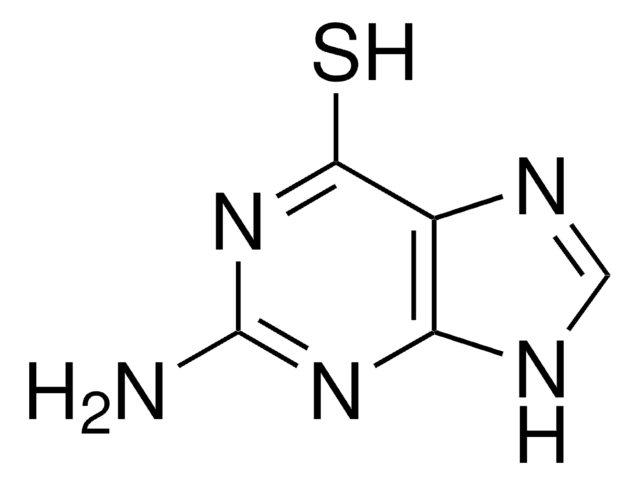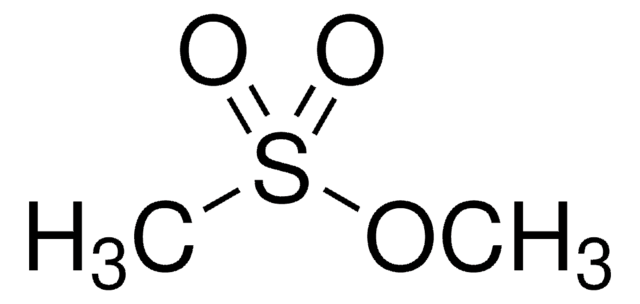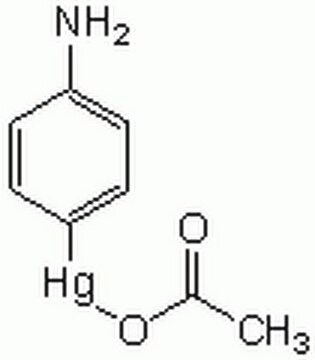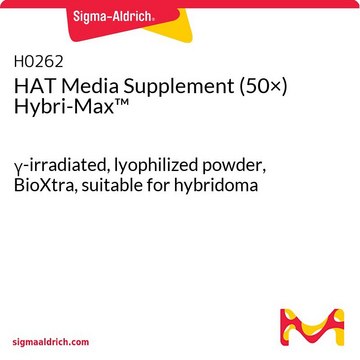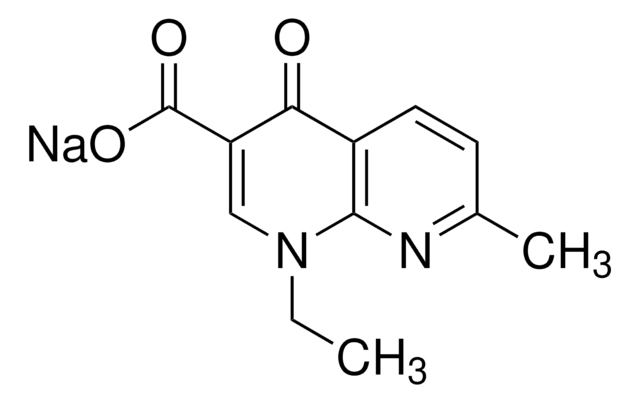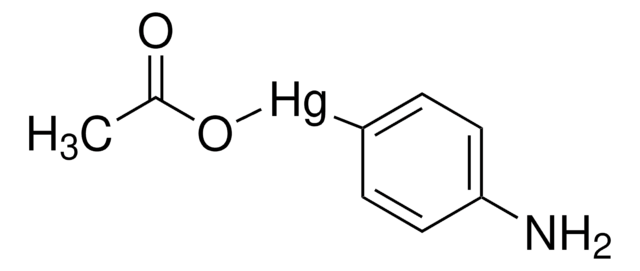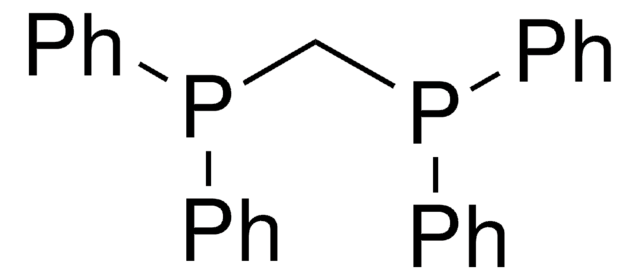A4660
6-Thioguanine
Hybri-Max™, 50 ×, γ-irradiated, lyophilized powder, BioXtra, suitable for hybridoma
Synonym(s):
2-Amino-6-mercaptopurine, 2-Amino-6-purinethiol
About This Item
Recommended Products
biological source
synthetic (organic)
Quality Level
grade
Hybri-Max™
sterility
γ-irradiated
product line
BioXtra
Assay
~98%
form
lyophilized powder
concentration
50 ×
technique(s)
cell culture | hybridoma: suitable
impurities
endotoxin, tested
mp
≥300 °C (lit.)
solubility
1 M NaOH: 50 mg/mL, clear to slightly hazy
storage temp.
room temp
SMILES string
NC1=Nc2nc[nH]c2C(=S)N1
InChI
1S/C5H5N5S/c6-5-9-3-2(4(11)10-5)7-1-8-3/h1H,(H4,6,7,8,9,10,11)
InChI key
WYWHKKSPHMUBEB-UHFFFAOYSA-N
Gene Information
human ... IMPDH1(3614) , IMPDH2(3615)
Looking for similar products? Visit Product Comparison Guide
Related Categories
Application
Biochem/physiol Actions
Reconstitution
Legal Information
Signal Word
Danger
Hazard Statements
Precautionary Statements
Hazard Classifications
Acute Tox. 3 Oral
Storage Class Code
6.1C - Combustible acute toxic Cat.3 / toxic compounds or compounds which causing chronic effects
WGK
WGK 3
Flash Point(F)
Not applicable
Flash Point(C)
Not applicable
Personal Protective Equipment
Certificates of Analysis (COA)
Search for Certificates of Analysis (COA) by entering the products Lot/Batch Number. Lot and Batch Numbers can be found on a product’s label following the words ‘Lot’ or ‘Batch’.
Already Own This Product?
Find documentation for the products that you have recently purchased in the Document Library.
Customers Also Viewed
Our team of scientists has experience in all areas of research including Life Science, Material Science, Chemical Synthesis, Chromatography, Analytical and many others.
Contact Technical Service